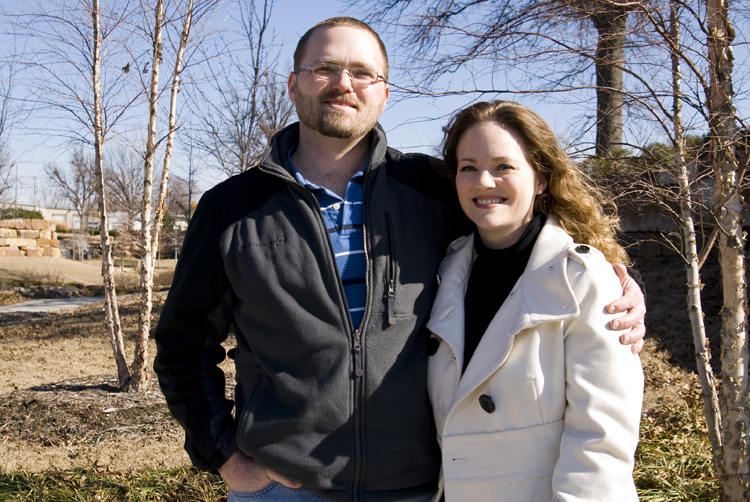W. Eugene Smith was a legendary staff photographer for Life magazine. Concluding a lecture at Syracuse University he was asked “Mr. Smith, is the only good light available light?” “Yes,” he said and paused. A shudder ran through the crowd. That was it! No more flash! God’s light or nothing! But then he leaned back into the microphone, “By that, I mean any &*%%@$# light that’s available” (as told by Joe McNally in his book The Moment It Clicks).
Today I want to talk a little bit about how we can use light to control light. And I stress “a little bit.” Using flash is a massive subject, for which there is loads of information out there, and of which I am no expert. I have come a long way in my understanding of light and how to use it. But compared to Jeremy Cowart, Joe McNally, David Hobby, or Zack Arias, I'm just a hack with a light on a stick (but one day I’ll give them a run for their money =) ).
There are purists out there who will only shoot in available (ambient) sunlight. And I used to be one of them. Flash photography was sub-par, and to be avoided. But what did I know, I was young and ignorant. Looking back, this was not an informed decision. More than anything, I was scared of using flash, and thus, flash was bad. However, once I began to learn how we can use flash light to control available light, it opened up a whole new universe of creativity. With flash, we no longer have to avoid the harsh midday sun. Flash can control it, and we can shoot from sunup to sundown. With enough flash power, we have the ability to turn day into night (just check out this shot by Zack Arias). Once we learn how to use flash, we can become a true “Available Light” photographer, taking advantage of any light that’s available, including that hotshoe flash in our bag.
So lets get to the understandin’ part. In outdoor portraiture we have the ability to knock down the harsh sun simply by implementing a flash. Shutter Speed controls continuous light, while Aperture controls flash light. This is critical. Continuous light is controlled by Shutter Speed. Flash light is controlled by Aperture. Flash to Aperture, Continuous to Shutter. Tattoo that on your brain.
Here’s a down and dirty ‘splainin’ of how that works. Set up your flash to light your subject. Then expose for the flash by adjusting the aperture. With a hotshoe flash, you can usually get up to somewhere around f/11, depending on whether you use a modifier (i.e. softbox, umbrella etc.) or not. Then, expose for the continuous light by adjusting the shutter speed. You can darken the scene with a faster shutter speed, or lighten the scene with a slower shutter speed. Lets look at what I mean, with a real life example.
Here’s a shot of my good friend Aaron and his sister Amy. I shot both families together a few weeks back. The shoot had everything going against it. It was super windy, very cold, and in the harsh midday sun. Why didn’t we schedule it for later in the year when its warmer? Aaron and his family live north of Springfield, MO. Amy and her family live in Tulsa. Getting both families from different states available on the same day I was free for a shoot, was near impossible. We’d been trying to book a date for months. Finally a day in late January looked to be our only choice. Between the two families, there were five children under the age of 5, two of which were newborns. Starting at noon was the only nap-free time of the day. So noon it was. Here’s what the available light was allowing:
Shot at ISO100, f/6.3 at 1/250th. Harsh and nasty. Luckily though, I’m an available light photographer. I also used an SB-800 flash, because I had it available =). Knowing that adding flash can nock down a harsh sunlight, whipped it out, set it up, and started shooting. Here’s the result:
ISO100, f/11 at 1/250th. Much better balance. Not perfect, but a heck of a lot better than straight sunlight. Notice the smoother skin tone, the lighter shadows, and the deeper blue sky – all captured IN CAMERA. No photoshop needed here. And it saved countless hours and headaches trying to fix these problems later in post production.
Occasionally we will find ourselves shooting in a situation that is less than ideal. Having the knowledge and tools to adapt will allow us to capture our vision even in the poorest environment. The key to this technique is to properly balance the flash with the ambient light. If not properly balanced, the image can look unnatural. So be careful of that.
This post is only the tip of the iceberg, so to speak. A mere introduction to what is possible when we use every light that is available to us, including flash. Much of the time, the existing light works great for an image. But many times, what’s there simply won’t work. In these situations, having the know-how to control the environment with flash can allow us to create images otherwise not possible. For more information about this technique I highly recommend you check out David Hobby’s Strobist website, or Zack Arias’ Onelight Workshops and/or DVDs. Heck, even Popular Photography even has a post about it. As a creative, you owe it to yourself to at least explore what flash has to offer. It might just kick your photography to a new level.
Now, go out and shoot something!



No comments:
Post a Comment